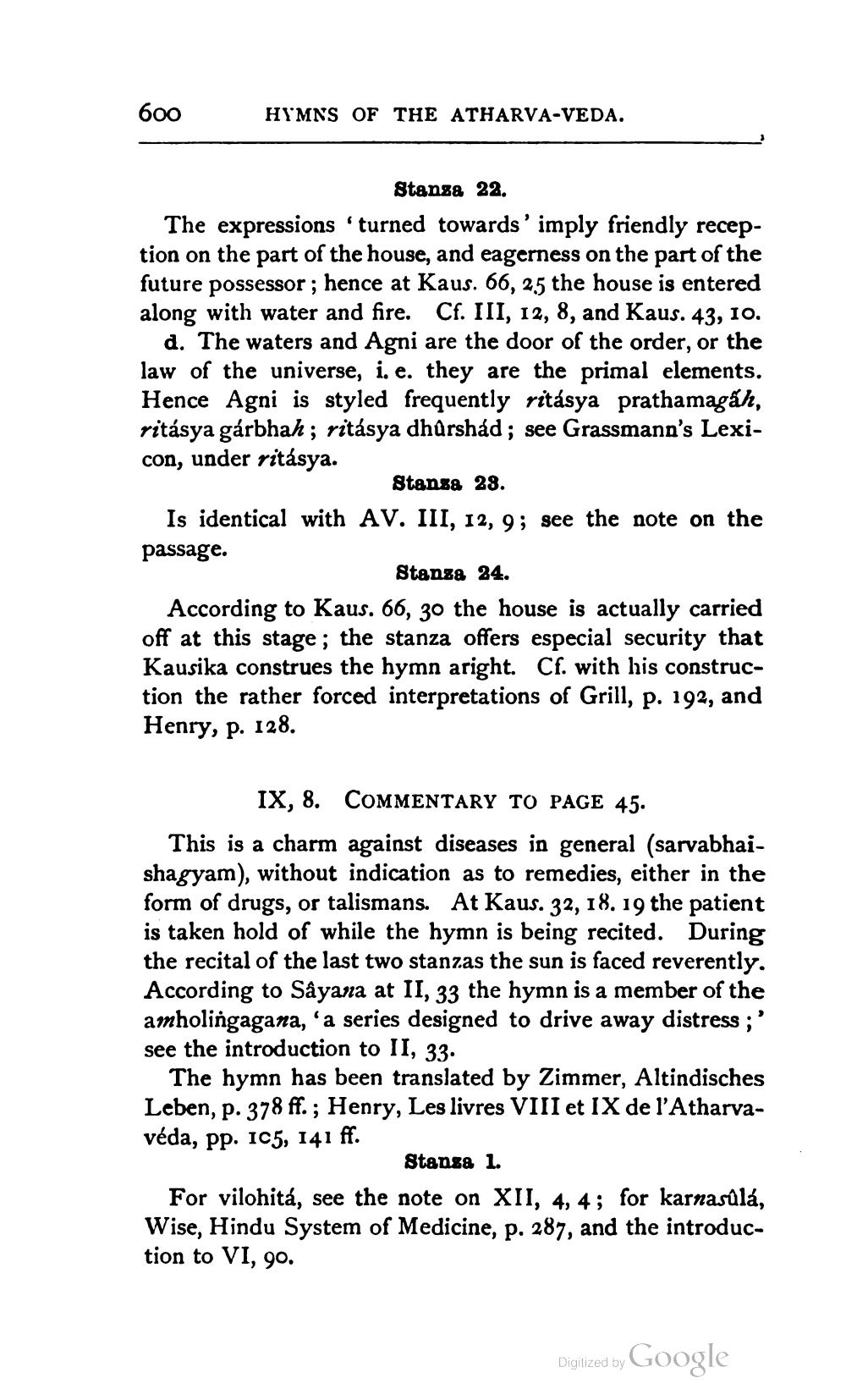________________
600
HYMNS OF THE ATHARVA-VEDA.
Stansa 22. The expressions 'turned towards' imply friendly reception on the part of the house, and eagerness on the part of the future possessor ; hence at Kaus. 66, 25 the house is entered along with water and fire. Cf. III, 12, 8, and Kaus. 43, 10.
d. The waters and Agni are the door of the order, or the law of the universe, i. e. they are the primal elements. Hence Agni is styled frequently ritásya prathamagah, ritásya gárbhah ; ritásya dhůrshad; see Grassmann's Lexicon, under ritásya.
Stansa 28. Is identical with AV. III, 12, 9; see the note on the passage.
Stanza 24. According to Kaus. 66, 30 the house is actually carried off at this stage; the stanza offers especial security that Kausika construes the hymn aright. Cf. with his construction the rather forced interpretations of Grill, p. 192, and Henry, p. 128.
IX, 8. COMMENTARY TO PAGE 45. This is a charm against diseases in general (sarvabhaishagyam), without indication as to remedies, either in the form of drugs, or talismans. At Kaus. 32, 18. 19 the patient is taken hold of while the hymn is being recited. During the recital of the last two stanzas the sun is faced reverently. According to Sâyana at II, 33 the hymn is a member of the amholingagana, a series designed to drive away distress ;' see the introduction to II, 33.
The hymn has been translated by Zimmer, Altindisches Leben, p. 378 ff.; Henry, Les livres VIII et IX de l'Atharvavéda, pp. 105, 141 ff.
Stansa 1. For vilohitá, see the note on XII, 4, 4; for karnasula, Wise, Hindu System of Medicine, p. 287, and the introduction to VI, 90.
Digized by Google




